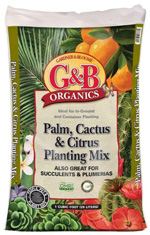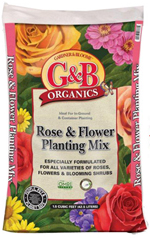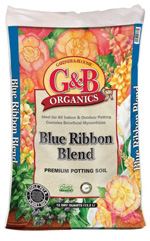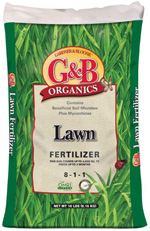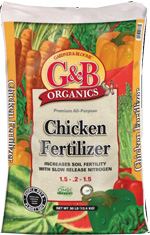|

|
 |
Featured Quotation: "Bread and butter, devoid of charm in the drawing room, is ambrosia eaten under a tree." |
 |
 |

|
| Click to print this article. |

If you haven't already done so, make sure to protect your fruit trees from pests and disease by applying a dormant spray to them. Most fruit trees should be sprayed at least twice--once in January when they are fully dormant and once again at bud swell. It's helpful to combine a dormant oil spray with a fungicide at the same time so you only have to spray once. This important spraying will help prevent fungus diseases such as dead bud and peach-leaf curl, in addition to knocking out any overwintering insects or insect eggs. Since different varieties of fruit trees bloom at different times, it's important to make sure you apply your spray at the proper time for maximum effectiveness. Our staff of garden experts will be happy to guide and advise you with all your spray applications. |

 |
|
What's the best time to spray my peach and nectarine trees to prevent peach-leaf curl? Answer: Peaches and nectarines should actually be sprayed 3 times each winter to prevent peach-leaf curl. The first (and most important) time to spray is in fall when about half the leaves have fallen. We recommend a combination of a copper spray with a spreader sticker. The first spray should also include dormant spray oil to kill any insects hoping to over-winter. The key is to make this first application before winter storms and while there is still some foliage to absorb the spray. The second application should be made at full dormancy in mid-winter. The third and final application should be made during pink bud swell, but prior to opening of blooms. (We recommend staying upwind from the spray unless you are planning to audition for the Blue Man Group.) |

|
Gardeners who have learned the glories of picking fresh fruit from their own orchards eagerly await the bare root season to take their list of desired trees to the local nursery. Your first look at the bare root fruit tree that you envision bearing baskets of fresh sweet fruit may be a bit of a disappointment; it won't win a beauty contest. But there is a bonus to buying bareroot. As those smart gardeners know, you get great fruit trees at a price considerably less than a containerized tree. Unlike evergreen fruits such as citrus, deciduous trees go through a dormant phase during which they lose all their leaves. Whether you're choosing plum, nectarine, pear, peach, pomegranate, persimmon, cherry or quince trees, the safest time to dig these young ones from the field for transportation to the nursery sans soil on their roots, is when they are in a state of dormancy, hence the term "bare root." True gardeners have learned patience. They will choose the smaller specimens, as the larger the tree the more out of balance will be the root to stem ratio. And while it may be momentarily painful, top that first year bare root off at 2 to 3 feet in height, with no side branches remaining. Doing this means that the scaffold, which is the lower side supporting structural branches, will be lower to the ground, making harvesting and pruning less of a chore. And while we're on pruning, peaches and nectarines will need to be heavily pruned each dormant season; apples, pears, almonds, plums, persimmon and apricots, once they are established, will only require moderate pruning. It's wisest to ready the planting holes for your trees prior to going to the nursery, so that you can get them into the ground the same day. As with most plants and trees, they like loose soil with good drainage, and sunny locations. If your soil conditions are less than perfect, but the location you've chosen is, why not plant your new additions in a raised bed? This allows you to completely control the soil into which you are placing the trees. Group trees that have similar spraying needs, and those varieties of fruit trees that require pollinators. Bees and the wind will assist you with this, so how lucky if your neighbors have cultivars that are needed for pollination of your trees! Your planting holes should be wide rather than deep. A depth the length of the rootstock, or approximately 1.5 feet, should suffice. Put your hands into the earth and form a slight mound. Place your tree on the mound, gently spreading out the roots so that they aren't encircling the tree. Use the native soil, or a mixture if you need to amend, to fill in the hole, and don't fertilize until you see growth on the tree. Once planted, mulch the area around the tree. For the first two years, dilute the fertilizer by half so that young roots do not get burned. It will take a couple of years before your bare root fruit tree actually bears fruit, but what a relatively short wait for the satisfaction of knowing that you were a part of the growth process nearly from the beginning. And imagine how sweet that first bite of fruit will taste! |
 |
|
Outside of the easily-identified blueberries and strawberries, the world of berries can be very confusing. You have blackberries, black raspberries, red raspberries, and yellow raspberries. And don't forget boysenberries, loganberries and marionberries, which are all closely related. How do you tell them apart? Berries whose core stays intact are blackberries. Berries that lose the core and resemble a thimble are raspberries. But then...a few berries are a cross between the two! The similarities don't stop there. All bear fruit on two-year-old wood, except for the ever-bearing raspberries that also fruit on first year growth. These are also called two-crop raspberries because they bear a late summer or fall crop on the first year growth and a second crop the following spring on the two-year-old wood. Different types of wood? What's that all about? Ok, it may help clear up a lot of confusion about blackberry and raspberry culture if one remembers that after flowering and fruiting, any cane that bore fruit dies back to the crown. All the new growth will rise out from primary buds just below the soil line. Now here's the good news, blackberries, raspberries and any other favorites will thrive in most locations and soil types, but good drainage is desirable with most varieties. Just give them some room to ramble because they do like to spread out. As far as cold-hardiness goes, raspberries tolerate very cold temperatures better than blackberries. Most berries like being fed at blooming time, with a follow-up feeding in early fall after the plants have finished fruiting. Just use a well-balanced fruit food. They prefer staying moist, and should be watered regularly if rainfall is insufficient. The new canes that grow out each spring will not bear fruit until the following summer when they are two years old. After harvest, the two-year-old fruiting canes will start to die back and should be removed as close to the ground as possible without injuring the new canes. In mild climates berries can be trained to stakes or trellises in late summer or early fall, after the fruiting canes have been removed. In colder climates, the canes should be left on the ground over winter--making them less likely to be damaged by cold. The ideal time to "spring train" is after the danger of freezing weather and before the leaf buds begin expanding. We have berry plants that grow well in our local area. The bottom line is that all berries are easy to grow and they taste great. So don't stress about all your different choices. Just plant some berries and enjoy! |
 |
|
How should you prune a Japanese maple? Answer: Japanese maples can be lightly tip-pruned during the summer months to control new growth or runaway water shoots, but save the major pruning for winter, when the tree is fully dormant. Do not prune after the leaf buds start swelling, because the tree can bleed quite severely and become weakened. All Japanese maples have "eyes" on the branches, where the leaves were attached during the growing season. These "eyes" are small half moon swellings, spaced every 1-3" along the branches. Each "eye" faces a different direction, rotating along the branches. Pruning 1/4" above a particular eye will make the tree branch out in that direction the following year. You can control the shape and direction of the tree each year simply by deciding which eyes to prune above. Avoid pruning beyond the previous year's cuts. Always allow at least 2 "eyes" of new growth each year to remain on the tree. Pruning more severely can lead to knurled and stunted growth, with many tiny shoots coming out from the same spot. If a large branch needs to be pruned to thin out the tree and allow more light, prune it completely off. Make sure to seal all cuts larger than 1/2" in diameter with a pruning sealer. |

|
What you need:
Step by Step:
|
 click here for a printer friendly version of this page
click here for a printer friendly version of this page
 |
Written content © Garden Partners LLC, or respective authors. All Rights Reserved. Privacy Policy. All written content contained in this site is protected by United States copyright law and may not be reproduced, distributed, transmitted, displayed, published, or broadcast without prior written permission of Garden Partners, LLC. You may not alter or remove any trademark, copyright or other notice from copies of the content. |





